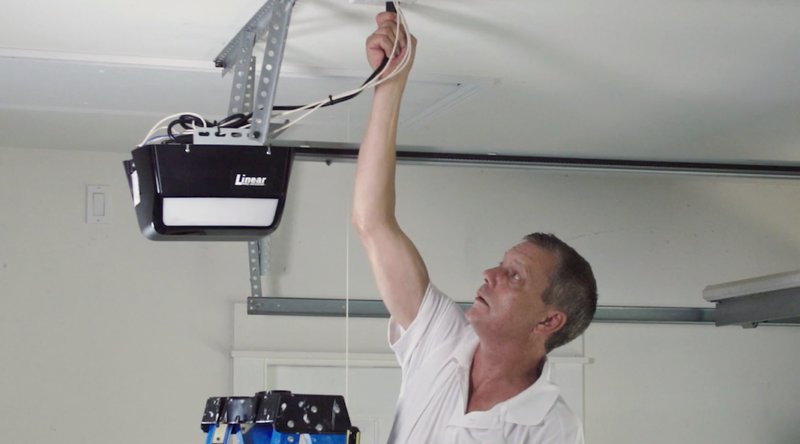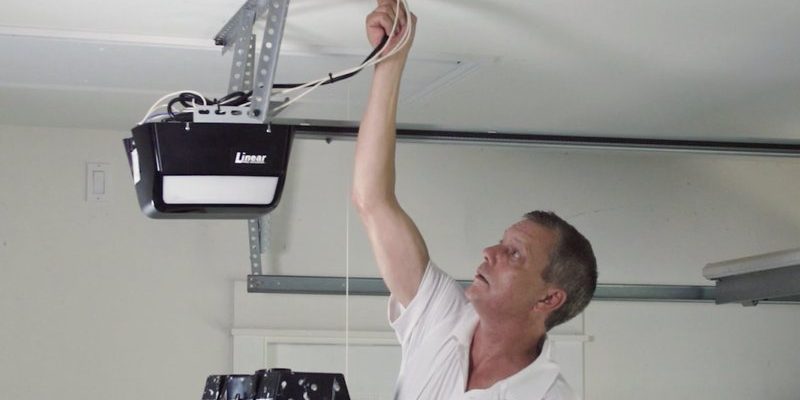
Let me explain: Linear is a well-known brand in the world of garage door openers. Their remotes are meant to be reliable and simple, but even the best tech sometimes needs a nudge. If your Linear remote isn’t cooperating, don’t worry. With a bit of patience (and maybe some fresh batteries), most issues can be solved at home, without calling a pro. Here’s how to get your remote back on track, whether you’re totally new to troubleshooting or just want to double-check your process.
Check and Replace the Remote Battery First
Honestly, the battery is the first place I check—mainly because it’s the most common culprit and the easiest fix. A Linear garage remote runs on a small battery, usually a coin-cell type, that can drain faster than you’d think. If the remote’s LED isn’t lighting up when you press a button, you’re likely dealing with a dead battery.
Here’s the thing: even if the light flickers, the battery might be too weak to send a proper signal. Don’t assume partial power means everything is fine. Pop open the remote (use a small screwdriver or coin, depending on the model), gently remove the old battery, and look for corrosion or leaks. If you spot any gunk, clean the contacts with a cotton swab and a touch of rubbing alcohol. Insert a new, compatible battery—check your manual or the old battery’s label to match the code—and snap the remote shut. Test it before you celebrate. Sometimes, a fresh battery is all it takes to wake up a sleepy remote.
Verify Remote Programming and Sync
So you’ve got a new battery, but the garage door still isn’t moving? You might be dealing with a programming issue. Remotes can lose their code settings after a battery swap or a power outage. Think of it like your TV forgetting your WiFi password—it just needs a reminder.
For most Linear garage door openers, you’ll need to sync (or pair) the remote with the opener unit. Start by finding the “learn” button on the opener, usually located on the back or side. Press and hold it until its indicator light turns on. Next, press the main button on your remote. Listen for a click or see if the opener’s light blinks. This means the code has been accepted, and you should be in business.
*If your remote still won’t talk to the door after syncing, double-check you’re not trying to pair a universal remote that isn’t compatible with Linear’s frequency or code system. Brand remotes are often more reliable but make sure you’re using the right model.*
Inspect for Interference or Signal Blockage
Signal interference is sneakier than you’d expect. It’s a bit like trying to shout across a loud party. Even if your Linear remote works fine up close, other devices or obstacles can choke its radio signal.
Start by moving closer to the garage door opener. If it works when you’re just a few feet away but fails at the curb, you might have interference from:
- LED or fluorescent lights (they sometimes mess with radio frequencies)
- WiFi routers or baby monitors
- Metal garage doors or shelving creating a physical barrier
Try turning off nearby electronics one at a time to isolate the culprit. Also, check whether antenna wires on the opener are hanging straight down—their position matters for proper signal reception. If you live in a dense neighborhood, a neighbor’s opener or remote might even overlap frequencies (rare, but possible with older models). Swapping to a new code or resetting the opener can help dodge this headache.
Resetting the Linear Garage Remote and Opener Unit
If you’ve tried everything but your remote stubbornly refuses to cooperate, a full reset might be in order. This is like clearing out the clutter in your phone’s memory—it gives everything a fresh start.
To reset, locate the opener’s “learn” or “smart” button. Hold it down for about 10–15 seconds, until you see the opener’s indicator light blink or go out. This wipes all existing codes, which means any remote or keypad that was paired before will need to be programmed again.
Now, re-sync your Linear garage remote as described earlier. Sometimes, this “factory reset” approach irons out any hidden glitches or corrupted code. Just remember that anyone else sharing the garage will need to re-pair their remotes too.
Check the Garage Door Opener Unit and Wiring
You might be wondering: what if the remote is fine, but the garage itself won’t budge? In this case, it’s smart to check the opener unit and its wiring. Sometimes, what looks like a remote problem is really a power or motor issue.
Start by looking for lights or display codes on the opener. If it’s totally dark or unresponsive, check the outlet and circuit breaker. Unplug the unit, wait a few seconds, and plug it back in—that’s the classic “turn it off and on again” move. Honestly, you’d be surprised how often this works.
If the opener is getting power but doesn’t respond to the remote or the wall button, wiring could be loose or damaged. Inspect the wire connections at both the opener and the wall control panel. Frayed wires, loose terminals, or signs of critter damage (yep, mice love garages) can all break the chain.
Compare Universal Garage Remotes vs Brand-Specific Remotes
Here’s where a lot of people get tripped up: not all remotes play nicely with every opener. Universal garage remotes promise flexibility, but some models just don’t code correctly with older or proprietary Linear systems.
If you’re using a universal remote, double-check its compatibility. Most packaging lists supported brands, frequencies, and code types. Brand-specific remotes (like Linear’s own) tend to sync faster and have fewer quirks. That said, if you’ve lost your original, a good universal remote can save the day—just be prepared for extra steps in the pairing process.
If you’re tech-savvy, some universal remotes let you clone the remote code. But for a beginner, sticking with a Linear-branded replacement makes troubleshooting much less stressful.
When to Call a Professional for Linear Garage Remote Issues
Sometimes you do everything right, and the remote still won’t respond. At this point, it’s not about being stubborn—it’s about safety and saving time. Garage door systems involve electricity, motors, and heavy parts. If you suspect a motor problem, faulty board, or code issue you can’t crack, getting a technician involved is smart.
Signs you should call a pro:
- The opener makes grinding noises or moves erratically
- Lights flash in a strange pattern after trying to pair the remote
- You’ve reset and re-paired multiple times with no luck
A qualified garage door specialist can diagnose deeper circuit issues or replace a defective receiver unit. While it’s frustrating to hand off the problem, you’ll often save money (and nerves) compared to endless guessing.
Keeping Your Linear Garage Remote Working Longer
Let’s be real: nobody wants to troubleshoot their garage remote every few months. Keeping things running smoothly is all about small, regular habits. Check and replace batteries each spring. Keep the opener’s antenna dust-free. Store the remote somewhere safe—away from spills, heat, and accidental drops.
If you notice your signal cutting out or weakening, address it early. Replacing a battery or re-syncing beats waiting until you’re locked out on a rainy night. And if you ever upgrade your garage opener, take the opportunity to replace your remote and keep things current.
*Taking care of your Linear garage remote doesn’t require tech wizardry—just a bit of attention, patience, and, once in a while, a new battery.*
If you treat your remote to the occasional checkup (and keep a backup battery handy), you’ll be surprised how rarely problems pop up. Most issues are simple to fix, and armed with these troubleshooting tips, you’ll spend more time inside the garage than stuck outside.
